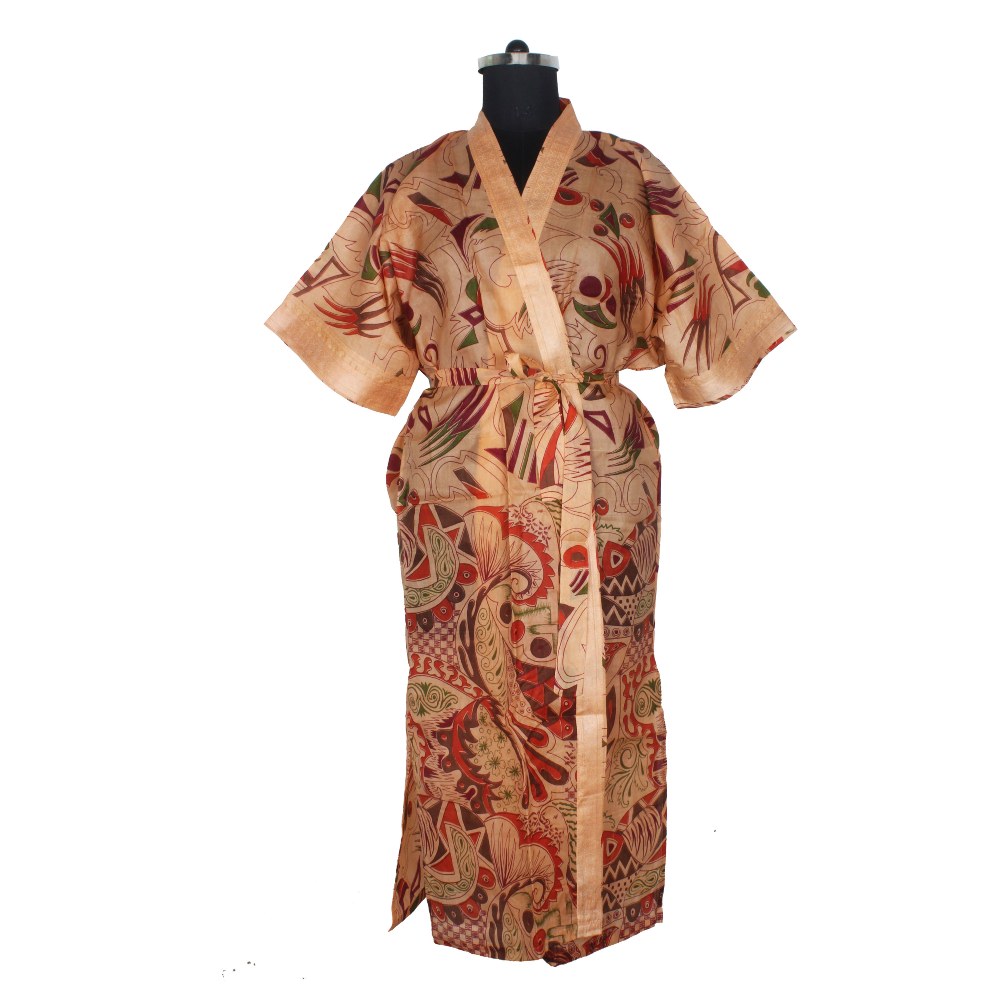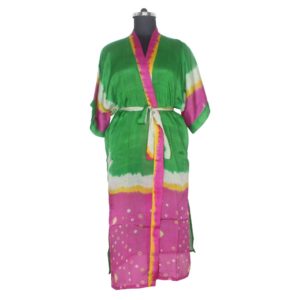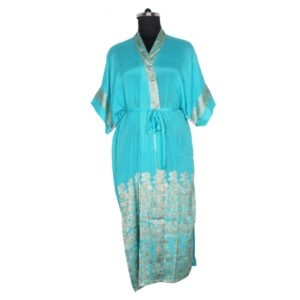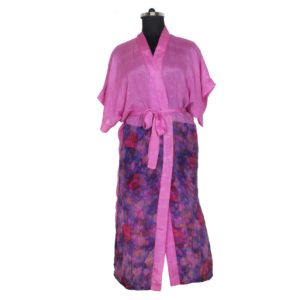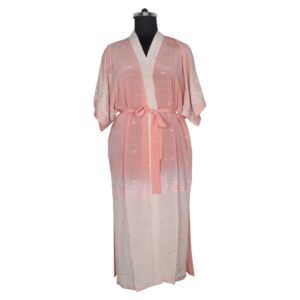Description
The Kimono Is A Traditional Japanese Garment. The Word Kimono Literally Means Ki (“Wearing”, Specifically On The Upper Body) + Mono (“Thing”)
Over Time, The Kimono Has Come To Be A T-Shaped Wrapped Garment With Set Sleeve Lengths, Variations And A Set Way Of Construction. The Plural Of Kimono Is Kimono, As Japanese Does Not Distinguish Plural Nouns, Though The English Plural Kimonos Is Also Used. Kimono Are Often Worn For Important Public Holidays And Festivals, And For Formal Occasions Such As Weddings And Funerals.
The Kimono Is Usually Worn Ankle-Length, Though Women’s Kimono Are Longer As Their Kimono Are Folded At The Hip. The Collar Is Attached Flatly, And Always Worn Left Over Right (Unless The Person Wearing The Kimono Is Deceased). The Kimono’s Sleeves Reach The Wrist, And Variations Of Kimono May Have Sleeves Long Enough To Touch The Ground.
Kimono Are Tied With A Sash Called An Obi, Knotted At The Back, Though It Is A Series Of Ties Called Koshihimo (‘Waist Cord/Wrap’) That Actually Keep Kimono Closed, As Modern Obi Are Too Stiff To Keep Kimono In Place. The Obi Is Tied In A Knot Known As A Musubi At The Back, And There Are Many Varieties Of Musubi Based On Formality, Obi Type And Age. Kimono Are Generally Worn With Traditional Footwear Such As Z?ri Or Geta, And Split-Toed Socks Called Tabi.
Today, Kimono Are Most Often Worn By Women, Particularly On Special Occasions. Unmarried Women Traditionally Wore Furisode (‘Swinging Sleeve’) Kimono, With Almost Floor-Length Sleeves, On Special Occasions, Though Even Their Casual Kimono Would Have Longer Sleeves With Rounded Edges At The Front. In Modern Times, A Woman Generally Only Wears Furisode To Special Occasions, And Stops Wearing Furisode In Her Early 20s, Married Or Not. Men Wear The Kimono Most Often At Weddings, Tea Ceremonies, And Other Very Special Or Very Formal Occasions.
The People Who Tend To Wear Kimono The Most On A Daily Basis Are Older Men And Women, Geisha, And Sumo Wrestlers, The Last Being Required To Wear Traditional Japanese Dress Whenever Appearing In Public.
